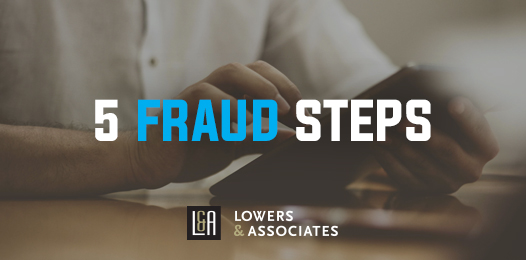
5 Basic Fraud Steps Every Organization Should Take

Almost every organization is vulnerable to occupational fraud and abuse, and the impact of fraud can be costly. The 2016 Report to the Nations by the Association of Certified Fraud Examiners (ACFE), indicates that the worldwide loss to fraud across all organizations is 5% of topline revenue. Based on reported cases of fraud, the median cost per case was $145,000, and some others were much more.
As part of the International Fraud Awareness Week for 2016, ACFE published 5 Fraud Tips, a one-page summary of steps an organization can take to reduce its vulnerability. Implementing these steps cannot guarantee your organization won’t suffer occupational fraud, but it will certainly improve the odds.
1. Be Proactive
Top management needs to put in place policies and procedures that set a tone from the top against fraud. This may include a code of ethics taught to every employee, with on-going follow up training that emphasizes the danger and unacceptability of fraud. Traditional financial controls should be in place and reviewed on a regular basis, possibly with an independent internal audit function. Fraud prevention will be enhanced through organizational structures like effective separation of duties.
2. Establish Hiring Procedures
The person you hire may be a future fraudster. The hiring process is an opportunity to look into the background of an applicant to look for factors that may indicate risk. Where it is legal, and following best practice guidelines strictly, employers can run a variety of background checks to get a fuller picture of an applicant’s character.
3. Train Employees in Fraud Prevention
Employee training can go beyond the code of ethics. Employees are on the frontline of fraud, working with others every day and working with the systems and controls that are potentially vulnerable to fraud. These employees need to be aware of the signs of fraud both in evidence (such as breeches of a control), and in the behavior of their colleagues. One of the most difficult factors of fraud to combat is the pressure employees may feel to look for ways to commit fraud.
4. Implement a Fraud Hotline
A straightforward way to improve fraud detection is a fair and anonymous hotline for reporting potential frauds. A tip has long been the most important source for fraud reporting, and the hotline can facilitate it.
5. Increase the Perception of Detection
Fraudsters’ number one concern is getting caught. An anti-fraud culture in which there is regular training, communication, and discussion about fraud makes it clear to the potential thief that he or she will be under surveillance. When fraud does occur, the organization has to act decisively to prosecute, sending the message that the crime will have consequences.
Taking these steps can reduce the risk of occupational fraud. In the long term, the improved channels of communication up and down the organization may also help establish a happier workplace, which is a further barrier to fraud.
ABOUT THE AUTHOR